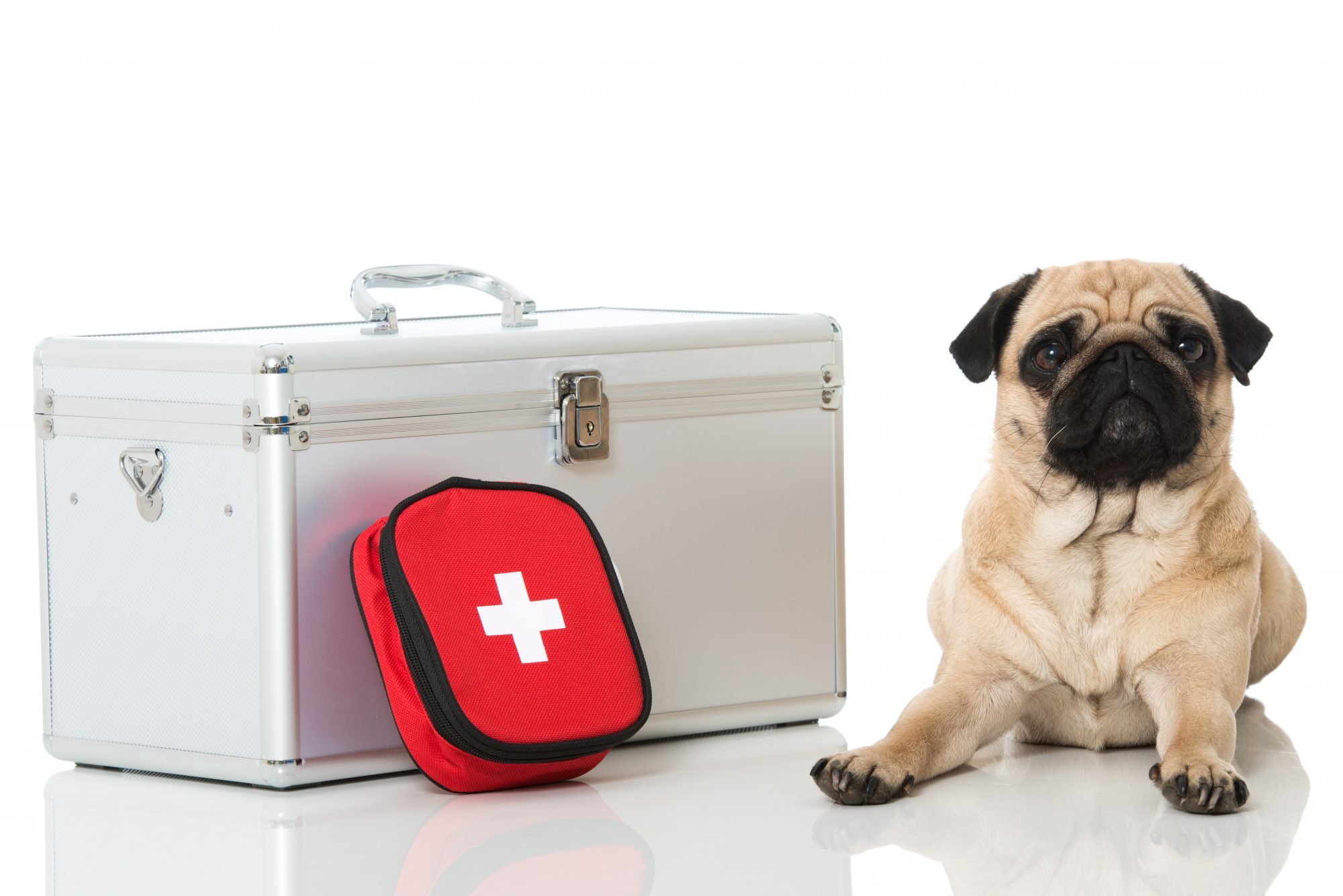How to Make a First Aid Kit for Your Pet
 Not every pet injury requires a trip to the veterinarian. For minor pet emergencies, a first aid kit for your pet is a great idea. For larger issues, a good first aid kit can help until you can reach emergency care. Do you know if you’re prepared to handle a cut, a bee sting, a mild allergic reaction, or an upset stomach?
Not every pet injury requires a trip to the veterinarian. For minor pet emergencies, a first aid kit for your pet is a great idea. For larger issues, a good first aid kit can help until you can reach emergency care. Do you know if you’re prepared to handle a cut, a bee sting, a mild allergic reaction, or an upset stomach?
We all love our pets, so a first aid kit is the best way to be prepared in case of a pet emergency.
First Aid Kit for Your Pet
Having a pet first aid kit handy is an excellent idea! Just like us humans, our pets can require a little first aid treatment now and then. We recommend having a fully stocked first aid kit at home as well as having a convenient, travel sized kit for when you are out and on the go.
Make sure all of the items you put into your first aid pet kit are specifically geared towards pets. For example, adhesive bandages that are made specifically for pets won’t stick to your pet’s fur like regular adhesive bandages will. Here’s what to include in your main kit:
- Paperwork. Include vaccination records and a first aid manual for pets. Have the number for your vet and an emergency vet hospital handy as well as the poison-control center or hotline. Be sure to add a current photo of your pet.
- Hydrogen peroxide. Hydrogen peroxide can be used to clean wounds as well as induce vomiting if your pet happens to consume something toxic.
(Activated charcoal may also be an option, but get approval by an experienced veterinarian over the phone first.) - Sterile saline. An eyedropper and a squirt bottle can help administer any it to rinse eyes or wounds.
- Wound Cleaning. The following items will help you to control any bleeding as well as protect any open wounds so they don’t get infected: stretchy bandages, self-cling bandages (sticks to itself but not to fur), cotton balls, wet wipes, antiseptic wipes, gauze rolls and pads, adhesive tape, scissors, rubber gloves and a syringe.
- Ice pack for swelling.
- Styptic pencil or powder to stop bleeding in small cuts.
- A large blanket (preferably a mylar space blanket) and 2 clean towels.
- Nutritional treats to help calm an injured pet.
- Leash and muzzle (to prevent biting if dog is injured and agitated).
- Bottled water with collapsible water bowl. Also an electrolyte replacement for pets. (Eletewater.com is one)
- Rectal thermometer and petroleum jelly to lubricate.
- Tweezers or tick nipper.
- Multitool or needle-nosed pliers (tons of uses).
- Medical stapler to quickly close wounds (optional).
- Flashlight or penlight.
First Aid Kit Storage
Once you have all of your first aid items together, invest in a handy, closed container to help protect the items from any damage. It might be worth it to make 2 first aid kits if you’re someone who is often on the go, as you can keep one in your vehicle and another in your home. A handy doggie backpack is also an option, so that your dog can carry it if you’re away from the car.
If a pet emergency happens to arise and you find yourself not knowing what to do, Oakland Veterinary Referral Services is just a phone call away.


